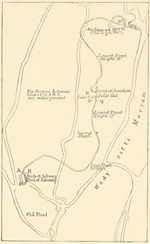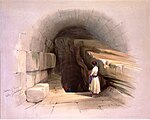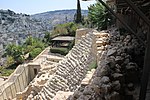Silwan

Silwan or Siloam (Arabic: سلوان, romanized: Silwan; Greek: Σιλωὰμ, romanized: Siloam; Hebrew: כְּפַר הַשִּׁילוֹחַ, romanized: Kfar ha-Shiloaḥ) is a predominantly Palestinian neighborhood in East Jerusalem, on the southeastern outskirts of the current Old City of Jerusalem.It is mentioned in the Hebrew Bible and the New Testament; in the latter it is the location of Jesus' healing the man blind from birth. Medieval Silwan began as a farming village, dating back to the 7th century according to local traditions, while the earliest mention of the village is from the year 985. From the 19th century onwards, the village was slowly being incorporated into Jerusalem until it became an urban neighborhood. After the 1948 war, the village came under Jordanian rule. Jordanian rule lasted until the 1967 Six-Day War, since which it has been occupied by Israel. Silwan is administered as part of the Jerusalem Municipality. In 1980, Israel incorporated East Jerusalem (of which Silwan is a part) into its claimed capital city Jerusalem through the Jerusalem Law, a basic law in Israel. The move is considered by the international community as illegal under international law, but the Israeli government disputes this. According to Haaretz, the Israeli government has worked closely with the right-wing settler organization Ateret Cohanim to evict Palestinians living on property whether classified formerly as heqdesh (property pledged to a temple) or not, especially in the Batan el-Hawa area of Silwan.Depending on how the neighborhood is defined, the Palestinian residents in Silwan number 20,000 to 50,000 while there are about 500 to 2,800 Jews.
Excerpt from the Wikipedia article Silwan (License: CC BY-SA 3.0, Authors, Images).Silwan
Jerusalem Abu Tor
Geographical coordinates (GPS) Address Nearby Places Show on map
Geographical coordinates (GPS)
| Latitude | Longitude |
|---|---|
| N 31.77 ° | E 35.237 ° |
Address
9355223 Jerusalem, Abu Tor
Jerusalem District, Israel
Open on Google Maps









